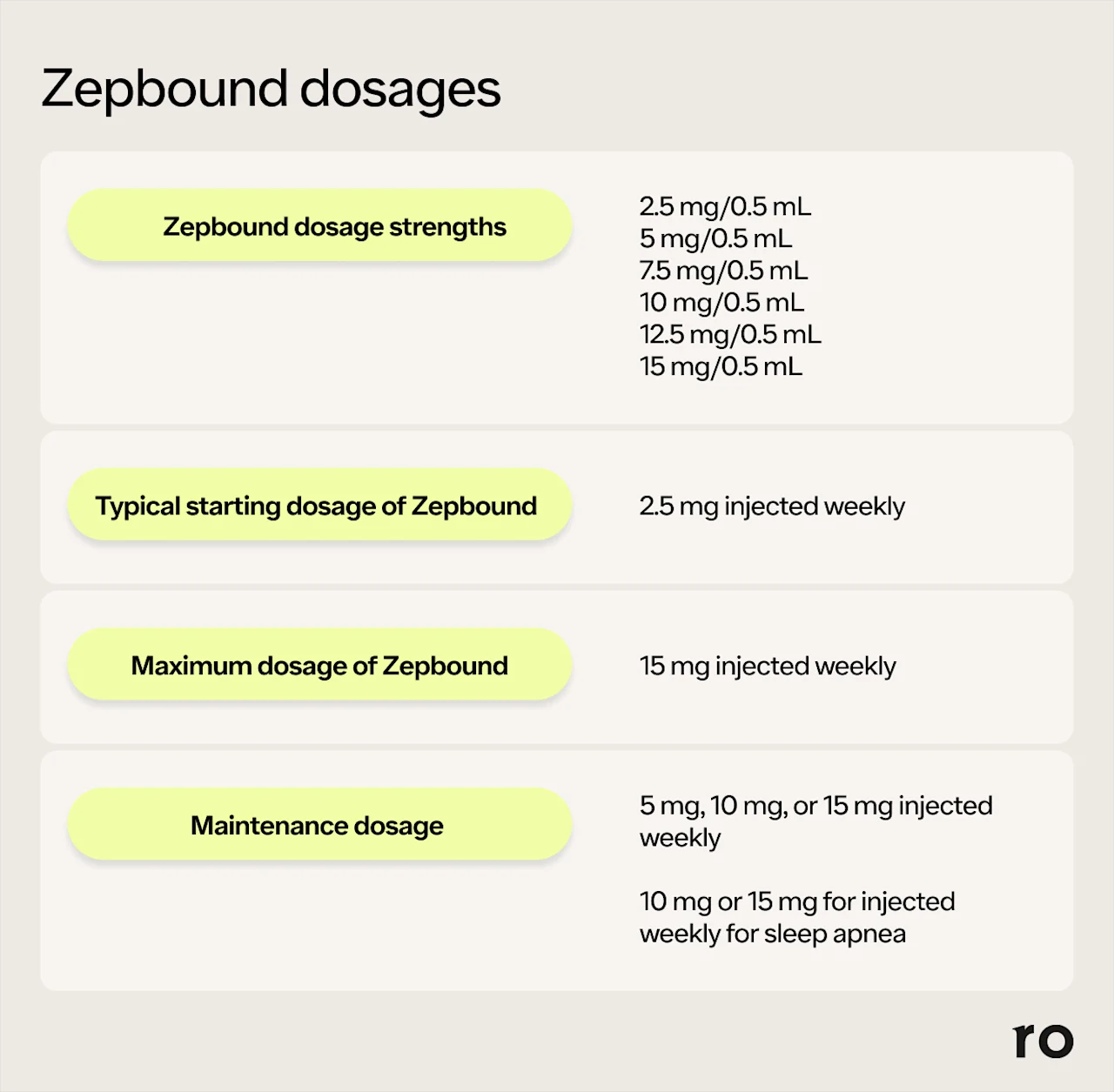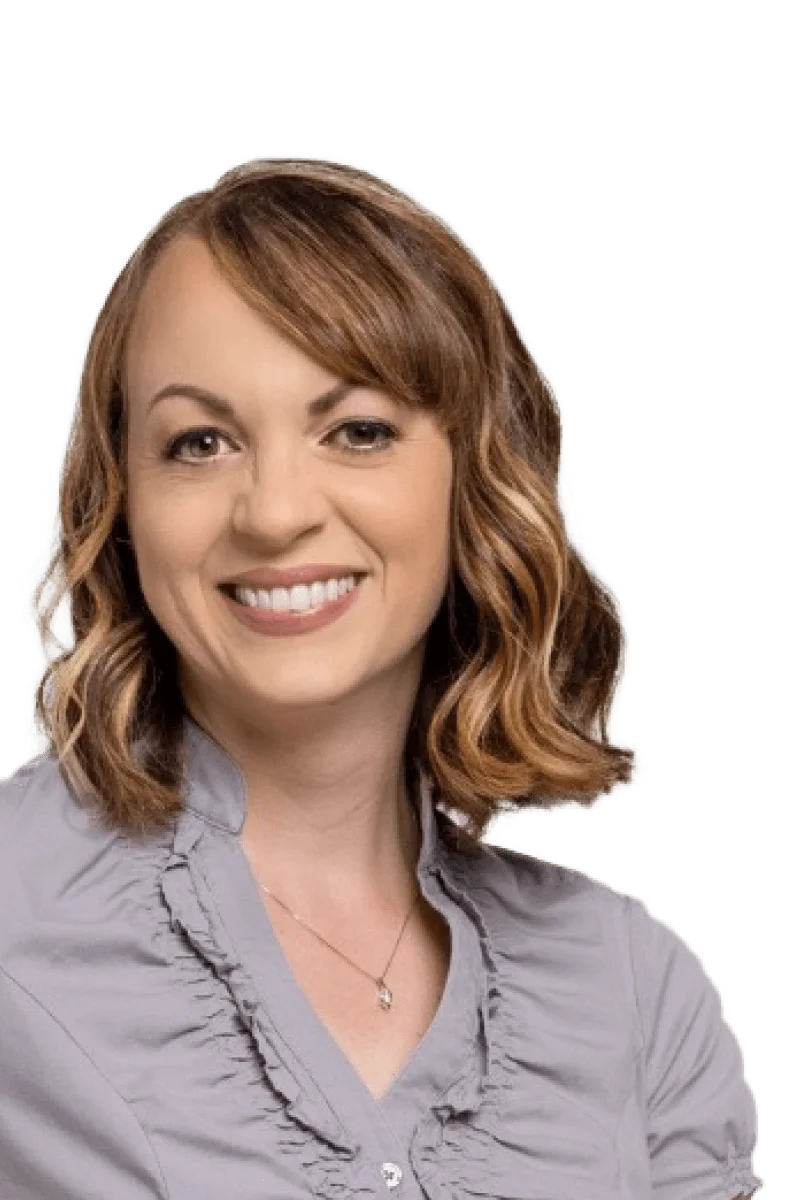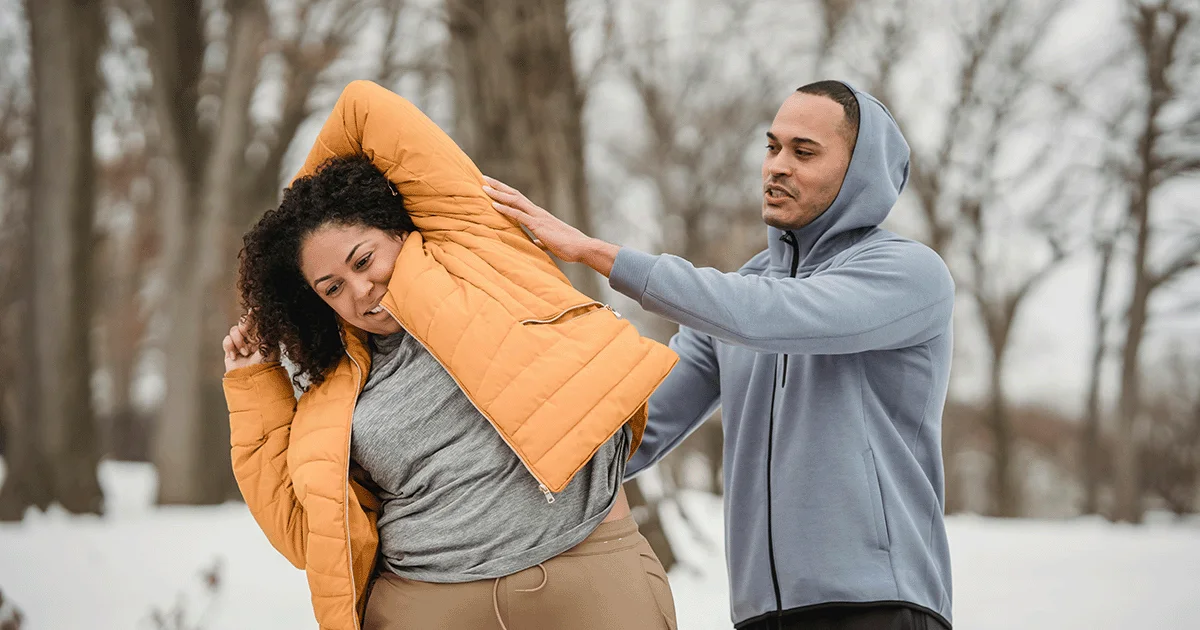Key takeaways
Zepbound (tirzepatide) is a prescription injectable medication for weight loss and chronic weight management as well as obstructive sleep apnea.
The most common starting Zepbound dose for weight loss is 2.5 mg once a week for 4 weeks. The Zepbound dosage then follows a weekly schedule, with injections administered under the skin of the thigh, abdomen, or upper arm.
Zepbound is available in six dosage strengths, starting at 2.5 mg/0.5 mL up to 15 mg/0.5 mL. The recommended maintenance Zepbound dosage for weight loss is 5 mg, 10 mg, or 15 mg once a week depending on each person’s response to the medication.
Here's what we'll cover
Key takeaways
Zepbound (tirzepatide) is a prescription injectable medication for weight loss and chronic weight management as well as obstructive sleep apnea.
The most common starting Zepbound dose for weight loss is 2.5 mg once a week for 4 weeks. The Zepbound dosage then follows a weekly schedule, with injections administered under the skin of the thigh, abdomen, or upper arm.
Zepbound is available in six dosage strengths, starting at 2.5 mg/0.5 mL up to 15 mg/0.5 mL. The recommended maintenance Zepbound dosage for weight loss is 5 mg, 10 mg, or 15 mg once a week depending on each person’s response to the medication.
Zepbound (tirzepatide) is a medication approved by the US Food and Drug Administration (FDA) that may be prescribed to adults with obesity or with overweight and at least one weight-related health condition such as type 2 diabetes mellitus, high blood pressure, or high cholesterol. It may also be prescribed for obstructive sleep apnea in adults with obesity. Zepbound dosing follows a ramp-up dosage schedule, where you gradually increase your dosage over a period of weeks, similar to other injectable weight loss drugs such as Wegovy (semaglutide) or Saxenda (liraglutide).
Zepbound comes in prefilled, single-dose injection pens or vials that you inject once a week. The medication is known as a dual GIP/GLP-1 receptor agonist, which stands for the two receptors it activates in your gut: glucagon-like peptide-1 (GLP-1) and glucose-dependent insulinotropic polypeptide (GIP). Tirzepatide is the active ingredient in Zepbound.
If you’re considering taking Zepbound for weight loss, you may be wondering what you can expect. Below, we provide a general guide to Zepbound dosing for weight loss specifically, but ultimately, you should follow the weekly dosing schedule and medical advice prescribed by your healthcare provider.
What is the typical Zepbound dosage for weight loss?
The typical Zepbound dosage for weight loss is 5 mg, 10 mg, or 15 mg weekly, once you are on a maintenance schedule. The drug comes in six strengths, which start at 2.5 mg and go all the way up to 15 mg.
Typically, your healthcare provider will prescribe a low starting dose of 2.5 mg for weight loss. The 2.5 mg dose is just to begin treatment and is not meant to be used long-term.
After four weeks, your healthcare provider will likely increase your dose to 5 mg. From there, they may continue to increase your dose by 2.5 mg every four weeks, based on your tolerance for Zepbound’s side effects and the weight loss results you are experiencing.
The maintenance dosage of Zepbound for weight loss is 5 mg, 10 mg, or 15 mg weekly. While the dose escalation schedule is the same as weight loss, the recommended maintenance dosage for sleep apnea is 10 mg or 15 mg once a week.
Keep in mind that it can take several months to work your way up to a maintenance dosage of Zepbound. This slow dose escalation is meant to help keep side effects manageable and ease the transition between doses until you find a maintenance dosage that is effective for you.
What is Zepbound’s dosage?
Zepbound is a liquid solution that comes in prefilled injection pens or single-dose vials. Each pen or vial contains a single dose of Zepbound in a 0.5 mL solution. Below is a brief overview of available dosages of Zepbound.

Single-dose vials are available in all six doses of Zepbound, ranging from 2.5 mg to 15 mg. These are only available through the LillyDirect self-pay pharmacy program and authorized partners such as Ro.
What dosages does Zepbound come in?
Zepbound comes in the following six dosage strengths. Each box of Zepbound contains four single-dose pens of the medication, which is roughly a month’s supply.
2.5 mg/0.5 mL
5 mg/0.5 mL
7.5 mg/0.5 mL
10 mg/0.5 mL
12.5 mg/0.5 mL
15 mg/0.5 mL
You can also get Zepbound in single-dose vials. Like the autoinjector pens, each vial contains a single dose of the medication, but you’ll use a separate syringe to draw the medicine out. The single-dose vials are currently available in the following strengths:
2.5 mg/0.5 mL
5 mg/0.5 mL
7.5 mg/0.5 mL
10 mg/0.5 mL
12.5 mg/0.5 mL
15 mg/0.5 mL
Zepbound dosage schedule
Typically, healthcare providers recommend starting at the lowest 2.5 mg dose of Zepbound. Then, every four weeks, they will gradually increase your dose in 2.5 mg increments until you find the amount that works best for you.
Each week, you’ll administer your injection of Zepbound on the same day of the week, at any time of the day. A typical Zepbound dose escalation schedule may look something like this:
Weeks 1–4 | 2.5 mg of Zepbound |
Weeks 5–8 | 5 mg of Zepbound |
Weeks 9–12 | 7.5 mg of Zepbound |
Weeks 13–16 | 10 mg of Zepbound |
Weeks 17–20 | 12.5 mg of Zepbound |
Weeks 21 and onward | 15 mg of Zepbound |
Gradually increasing the dosage in this way helps your body get used to the medication and minimizes common side effects like nausea, diarrhea, and vomiting. While this dosing schedule shows someone who was increased all the way up to 15 mg of Zepbound, not all patients need the maximum dose to have the appropriate effect.
As with most medications, the goal is to find the lowest effective dosage that produces the desired effect while keeping side effects manageable.
The lowest effective maintenance dosage of Zepbound for weight loss is 5 mg weekly.
The lowest effective maintenance dose for sleep apnea is 10 mg.
For either use, the maximum dosage is 15 mg weekly.
Depending on your body’s reaction to the medication and tolerance for side effects, your healthcare provider may have you stop increasing it once they find an effective dosage for you.
Or in some cases, they may recommend reducing your dose back to the previous amount if you’re having trouble tolerating the increase. Not everyone needs to continue to the maximum dose to get the full benefits of the medication.
What is Zepbound’s form?
Zepbound comes in a clear liquid solution, which may range from totally colorless to slightly yellow. (If it is cloudy or you see particles, dispose of the pen and don’t use it.)
Each pen or vial of Zepbound comes pre-filled with one dose of the medication. The autoinjector pen comes with a needle attached.
For those using a vial, you’ll need to use a separate needle and syringe with each injection.
Once a week, you will inject the medication subcutaneously (under the skin) into your thigh, abdomen, or upper arm. Rotate through the injection sites every week to give your body time to heal and prevent irritation. Then, you can throw away the pen or used needle and syringe in a sharps disposal container to prevent someone else from accidentally getting injured.
You can take Zepbound at any time of day, with or without meals, but it is important to try to take it on the same day each week.
In between doses, Zepbound should be refrigerated at 36°F–46°F (2°C–8°C). It can also be stored at room temperature (up to 86°F or 30°C) for up to 21 days. Do not freeze Zepbound. Once you store it at room temperature, it should not be returned to the refrigerator.
How is Zepbound dosage determined?
When taking Zepbound, the goal is to find the lowest effective dosage that produces and maintains weight loss while keeping side effects manageable. This dose will be your maintenance dosage.
Here are the recommended maintenance dosages:
For weight loss: 5 mg, 10 mg, 15 mg
For sleep apnea: 10 mg and 15 mg
Your healthcare provider will monitor how your body responds to Zepbound and advise you on when to increase your dosage. If side effects feel intolerable, they may recommend lowering your dosage.
Communicate with your healthcare provider throughout your treatment and let them know if you experience any side effects that concern you.
Factors that can affect dosage
The main factors that can affect your Zepbound dosage include how your body responds to treatment and your tolerance for side effects.
Between 30%–70% of people experience gastrointestinal side effects while taking higher doses of GLP-1 drugs like Zepbound. Most of these occur during the first two weeks of treatment and range from mild to moderate.
While these side effects are normally transient, in some cases, they can be bothersome enough to lead people to stop taking Zepbound. Higher doses of Zepbound may cause worse side effects than lower doses.
One study found that around 4% of people taking 5 mg of Zepbound discontinued the medication due to side effects, whereas 7.1% of people taking the 10 mg dose and 6.2% of people taking the 15 mg dose discontinued the medication.
Commonly reported side effects of Zepbound include:
Nausea
Diarrhea
Vomiting
Constipation
Abdominal pain
Indigestion
Injection site reactions
Fatigue
Allergic reactions
Belching
Acid reflux or heartburn
Zepbound slows stomach emptying, which can affect the absorption of other medications. For example, if you take oral contraceptives, your healthcare provider may recommend switching to a non-oral form of contraception (e.g. IUD), or adding in a barrier method (e.g. condoms) when starting Zepbound and for four weeks after each dosage increase.
Because Zepbound lowers blood sugar, combining it with other glucose-lowering medications (e.g. insulin or sulfonylureas) can raise your risk of experiencing hypoglycemia (low blood sugar). If you take insulin or an insulin secretagogue (e.g. glipizide), your healthcare provider may lower your dose of those drugs to reduce your risk of hypoglycemia.
Before starting Zepbound, be sure to share a full list of prescription and over-the-counter medications you are currently taking with your healthcare provider. This is the best action you can take to ensure Zepbound and your other medications continue working at their best, even if they are taken together.
Finally, some people may be at increased risk of experiencing serious side effects when taking Zepbound. This may affect the way your healthcare provider prescribes the medication. These individuals include people with:
Severe gastrointestinal disease, kidney or gallbladder problems
A history of diabetic retinopathy or pancreatitis.
Zepbound should not be used by people with a personal or family history of thyroid cancer or anyone who is currently pregnant, planning pregnancy, or breastfeeding.
What happens if you miss a dose of Zepbound?
If you miss a dose of Zepbound, your next steps depend on how much time has passed since the day of your missed dose.
If it has been less than four days (96 hours) since your missed dose, take your missed dose as soon as possible.
If it has been more than four days (96 hours), skip the missed dose and wait to take your next dose on your regularly scheduled day.
Never double up on your dose of Zepbound or take two doses within three days (72 hours) of each other.
To avoid missing a dose of Zepbound, follow these tips:
Schedule your injection day on a day of the week that you usually have free
Put your injection into your calendar
Set a weekly reminder on your phone
Pair your injection with another activity you reliably do the same day each week (like grocery shopping or laundry)
Missed Zepbound dosage chart
Here’s an example of how your missed Zepbound dose may work:

Do you have to take Zepbound on the same day?
Yes, Zepbound should be taken weekly, on the same day each week. You can take it at any time of the day, with or without meals.
When you start taking Zepbound, try to choose a day of the week that will consistently work for you. If you ever need to change the day you take Zepbound, you can do so as long as it has been at least three days (72 hours) since your last dose.
If you have questions about changing your Zepbound dosage schedule, talk to your healthcare provider.
Can you change your Zepbound injection day?
Zepbound works best when you take it as scheduled, on the same day each week. But if you need to, you can change your Zepbound injection day. Just make sure that you wait at least three days (72 hours) between the two doses. This means…
If you currently take your dose on Monday mornings and want to switch to Tuesday, wait to change it until the following Tuesday.
If you take your dose on Monday mornings and want to switch to Friday, you can take it that Friday.
What happens if you take too much Zepbound?
You should avoid taking two doses of Zepbound within three days (72 hours) of each other.
If you accidentally take too much Zepbound, contact America’s Poison Centers at 800- 222-1222 or visit their website at poisonhelp.org for next steps. You can also contact your healthcare provider or visit your local Urgent Care or Emergency Department if you are concerned about your health and want immediate attention from a healthcare provider.
If you notice any of the following, they could be signs of a serious side effect, such as low blood sugar or acute pancreatitis. Stop taking Zepbound and seek emergency medical care.
Persistent stomach pain, which may or may not feel severe
Pain that radiates from the abdomen to the back, with or without vomiting
Fever
Jaundice (yellowing skin or eyes)
Clay-colored stool
Swelling of your face, lips, tongue, or throat
Feeling faint or dizzy
Difficulty breathing or swallowing
Rapid heartbeat
Severe rash or itching
Sweating
Confusion
Blurred vision
Slurred speech
Shakiness
Feeling jittery
Weakness
Mood changes
Vision changes
Suicidal thoughts
How long does it take for Zepbound to start working?
Zepbound starts working fairly soon once you begin taking it. Although it may take a few weeks before you start noticing any changes in your appetite or cravings, and sometimes longer before you start noticing the body weight drop off.
In one clinical trial in people with type 2 diabetes, the weight loss became noticeable as early as week five, with participants taking Zepbound having lost nearly 6 pounds (compared with only about 2 pounds for those taking a placebo).
After 28 weeks, people taking Zepbound had lost an average of 24 pounds.
In another trial, participants with obesity (but without diabetes) experienced an average weight loss of 20.9% from their starting weight after 36 weeks of taking 10 mg or 15 mg of Zepbound.
Remember, Zepbound is FDA-approved in addition to a reduced-calorie diet and increased physical activity. So make sure to include these behaviors to see the best possible effects.
If you have questions about the way your Zepbound is working, you can always reach out to your healthcare provider. Never change your dosage of Zepbound without talking to a healthcare provider first.
Zepbound vs. Wegovy: dosages
Zepbound and Wegovy are both weekly injections that are FDA-approved for weight loss.
The two drugs mostly share the same list of side effects, but there are a few differences between them that may make one drug a better fit for one person over another. Plus, Wegovy may lead to less weight loss than Zepbound.
In clinical trials, people taking the maximum dosage of Wegovy lost 14.9% of their body weight over 68 weeks (about a year and a half).
In another study, people taking the highest dosage of Zepbound lost 20.9%, on average, in about the same time frame (72 weeks).
Wegovy also differs from Zepbound in that:
It has a different active ingredient (semaglutide, the same as Ozempic).
It takes a shorter time to reach the maximum dosage of Wegovy, as demonstrated in the chart below.
Medication | Dosage strengths | Starting dosage | Maintenance dosages | Maximum dosage |
|---|---|---|---|---|
Zepbound (tirzepatide) | Week 1–4: 2.5 mg weekly Week 5–8: 5 mg weekly Week 9–12: 7.5 mg weekly Week 13–16: 10 mg weekly Week 16–20: 12.5 mg weekly Week 21+: 15 mg weekly | 2.5 mg injected weekly | 5 mg, 10 mg, or 15 mg injected weekly | 15 mg injected weekly |
Wegovy (semaglutide) | Week 1–4: 0.25 mg weekly Week 5–8: 0.5 mg weekly Week 9–12: 1 mg weekly Week 13–16: 1.7 mg weekly Week 16+: 2.4 mg weekly | 0.25 mg injected weekly | 1.7 mg or 2.4 mg injected weekly | 2.4 mg injected weekly |
How to get Zepbound for weight loss
To get Zepbound for weight loss, you’ll need to meet with a licensed healthcare provider online or in person.
During your appointment, they’ll want to review your health history, current medications, weight loss goals, and experience with trying to lose weight in the past. If they determine Zepbound is the right option for you, they’ll give you a prescription, which you can fill at your preferred pharmacy.
You can get Zepbound vials or pens for weight loss online through Ro. After you complete a health questionnaire, a licensed healthcare provider will connect with you and prescribe Zepbound if appropriate.
Bottom line
Zepbound is a groundbreaking medication that offers an effective, tailored approach to managing obesity or overweight in adults, when used alongside a reduced-calorie diet and increased physical activity. However, as with any prescription medication, it’s important to follow the guidance of a healthcare provider so you can safely and effectively work toward your weight loss goals.
Zepbound is available in six strengths, from 2.5 mg to 15 mg. This allows you and your healthcare provider to find the lowest effective dose that achieves and maintains your weight loss goals while keeping side effects tolerable.
The drug follows a gradual ramp-up dosing schedule to minimize side effects while your body gets used to the medication. Typically, healthcare providers prescribe a low starting dose of 2.5 mg before gradually increasing by 2.5 mg every four weeks until you reach a maintenance dose (5 mg, 10 mg, or 15 mg) that’s effective for you.
You take Zepbound once a week. It is administered via prefilled pens or vials and injected subcutaneously on the same day each week.
Various factors can affect your Zepbound dosage, including other medications you are taking and your tolerance for the drug’s side effects. Your provider will monitor your progress and tolerance to determine the ideal dosage for you.
Frequently asked questions (FAQs)
Is the dosage of Zepbound similar to the dosage of Mounjaro?
Yes, Zepbound and Mounjaro are available in the same dosage strengths. Both are weekly injections made by Eli Lilly that contain tirzepatide as their active ingredient. They are FDA-approved for different indications. Zepbound is approved for weight loss and sleep apnea, while Mounjaro is approved for type 2 diabetes (but may be prescribed off-label for weight loss).
Mounjaro Important Safety Information: Read more about serious warnings and safety info.
Can I adjust my Zepbound dosage on my own?
No, you should not change your Zepbound dosage unless your healthcare provider tells you to. Zepbound is a prescription medication that should be taken under the guidance of a licensed healthcare provider. Changing your Zepbound dosage on your own may lead to side effects.
What is the maximum dosage of Zepbound?
The maximum dosage of Zepbound is 15 mg weekly. This is the maximum maintenance dosage for weight loss.
Can I take Zepbound with alcohol?
Zepbound is not known to interact dangerously with alcohol, but mixing the two might not be the best idea. Both alcohol and Zepbound can lower blood sugar, so drinking while you’re on the medication may increase your risk of experiencing hypoglycemia (low blood sugar). And drinking alcohol can worsen unpleasant gastrointestinal side effects of Zepbound, such as nausea. Drinking can also increase your risk of overeating and weight gain, which can get in the way of the weight loss you’re trying to achieve with Zepbound.
Can you overdose on Zepbound?
If you’ve taken too much Zepbound, immediately contact your healthcare provider or call the Poison Help Line at 1-800-222-1222. They can advise you on what to do. If you experience severe symptoms, call 911 or go to the ER.
DISCLAIMER
If you have any medical questions or concerns, please talk to your healthcare provider. The articles on Health Guide are underpinned by peer-reviewed research and information drawn from medical societies and governmental agencies. However, they are not a substitute for professional medical advice, diagnosis, or treatment.
Zepbound Important Safety Information: Read more about serious warnings and safety info.
Wegovy Important Safety Information: Read more about serious warnings and safety info.
Saxenda Important Safety Information: Read more about serious warnings and safety info.
GLP-1 Important Safety Information: Read more about serious warnings and safety info.
Ozempic Important Safety Information: Read more about serious warnings and safety info.
References
Aronne, L. J., Sattar, N., Horn, D. B., et al. (2024). Continued Treatment With Tirzepatide for Maintenance of Weight Reduction in Adults With Obesity: The SURMOUNT-4 Randomized Clinical Trial. JAMA, 331(1), 38–48. doi: 10.1001/jama.2023.24945. Retrieved from https://jamanetwork.com/journals/jama/fullarticle/2812936
Collins, L. & Costello, R. A. (2023). Glucagon-Like Peptide-1 Receptor Agonists. StatPearls. Retrieved Mar. 20, 2024 from https://www.ncbi.nlm.nih.gov/books/NBK551568/\
Eli Lilly. (2024). How do I get Zepbound® (tirzepatide) vials?. Retrieved from https://medical.lilly.com/us/products/answers/how-do-i-get-zepbound-tirzepatide-vials-250061
Heise, T., DeVries, J. H., Urva, S., et al. (2023). Tirzepatide Reduces Appetite, Energy Intake, and Fat Mass in People With Type 2 Diabetes. Diabetes Care, 46(5), 998–1004. doi: 10.2337/dc22-1710. Retrieved from https://www.ncbi.nlm.nih.gov/pmc/articles/PMC10154650/
Jastreboff, A. M., Aronne, L. J., Ahmad, N. N., et al. (2022). Tirzepatide Once Weekly for the Treatment of Obesity. The New England Journal of Medicine, 387(3), 205–216. doi: 10.1056/NEJMoa2206038. Retrieved from https://www.nejm.org/doi/10.1056/NEJMoa2206038
Kase, C. A., Piers, A. D., Schaumberg, K., et al. (2016). The relationship of alcohol use to weight loss in the context of behavioral weight loss treatment. Appetite, 99, 105–111. doi: 10.1016/j.appet.2016.01.014. Retrieved from https://pubmed.ncbi.nlm.nih.gov/26792773/
Lin, F., Yu, B., Ling, B., et al. (2023). Weight loss efficiency and safety of tirzepatide: A Systematic review. PloS One, 18(5), e0285197. doi: 10.1371/journal.pone.0285197. Retrieved from https://www.ncbi.nlm.nih.gov/pmc/articles/PMC10159347/
Oba-Yamamoto, C., Takeuchi, J., Nakamura, A., et al. (2021). Combination of alcohol and glucose consumption as a risk to induce reactive hypoglycemia. Journal of Diabetes Investigation, 12(4), 651–657. doi: 10.1111/jdi.13375. Retrieved from https://pmc.ncbi.nlm.nih.gov/articles/PMC8015820/
U.S. Food & Drug Administration (FDA). (2025). Highlights of Prescribing Information: Wegovy (semaglutide) injection, for subcutaneous use. Retrieved from https://www.accessdata.fda.gov/drugsatfda_docs/label/2024/215256s015lbl.pdf
U.S. Food & Drug Administration (FDA). (2025). Highlights of Prescribing Information: Zepbound (tirzepatide) Injection, for subcutaneous use. Retrieved from https://www.accessdata.fda.gov/drugsatfda_docs/label/2025/217806s031lbl.pdf
Wilding, J. P. H., Batterham, R. L., Calanna, S., et al. (2021). Once-Weekly Semaglutide in Adults with Overweight or Obesity. The New England Journal of Medicine, 384(11), 989–1002. doi: 10.1056/NEJMoa2032183. Retrieved from https://www.nejm.org/doi/10.1056/NEJMoa2032183














